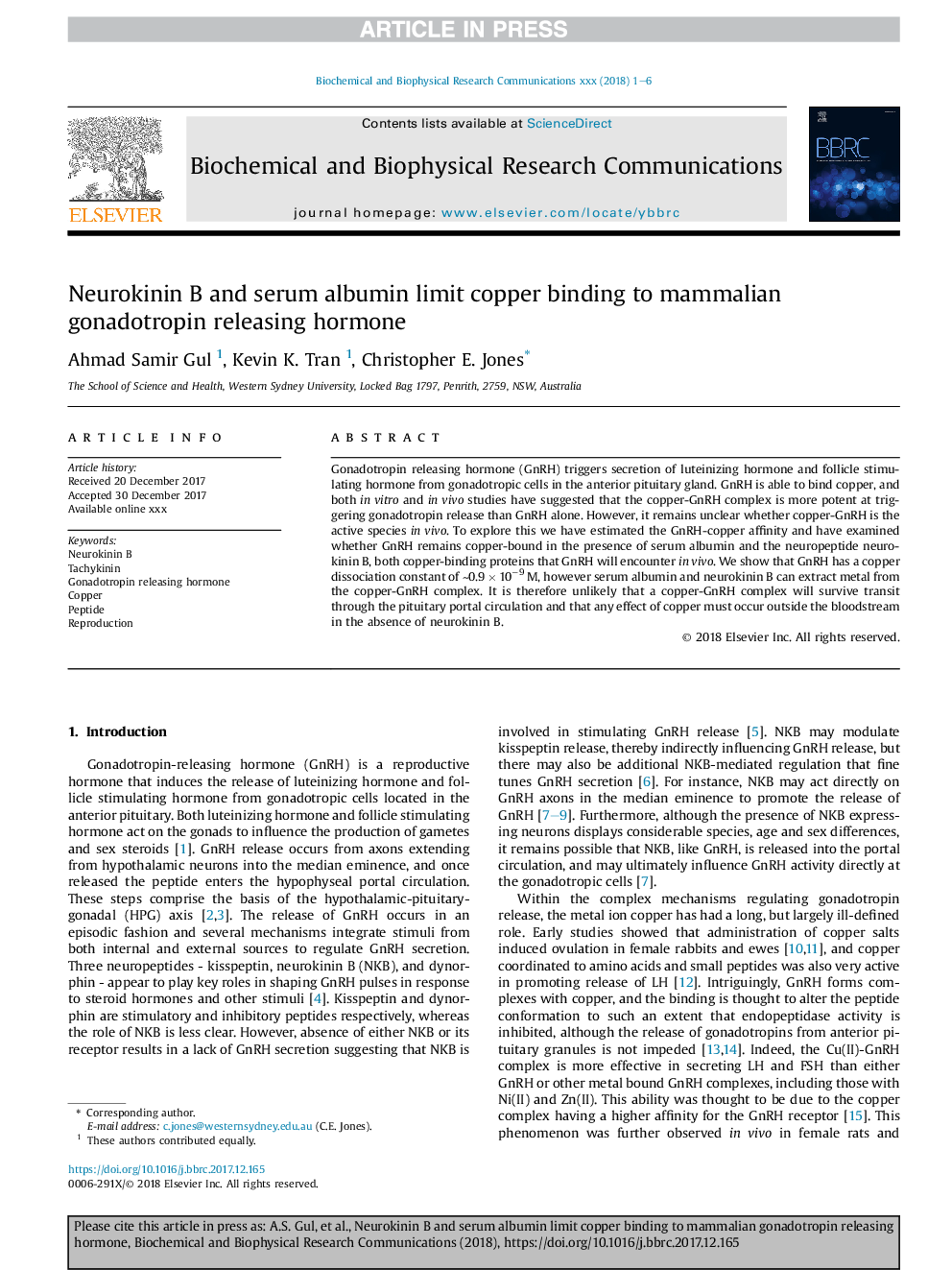| Article ID | Journal | Published Year | Pages | File Type |
|---|---|---|---|---|
| 8294142 | Biochemical and Biophysical Research Communications | 2018 | 6 Pages |
Abstract
Gonadotropin releasing hormone (GnRH) triggers secretion of luteinizing hormone and follicle stimulating hormone from gonadotropic cells in the anterior pituitary gland. GnRH is able to bind copper, and both in vitro and in vivo studies have suggested that the copper-GnRH complex is more potent at triggering gonadotropin release than GnRH alone. However, it remains unclear whether copper-GnRH is the active species in vivo. To explore this we have estimated the GnRH-copper affinity and have examined whether GnRH remains copper-bound in the presence of serum albumin and the neuropeptide neurokinin B, both copper-binding proteins that GnRH will encounter in vivo. We show that GnRH has a copper dissociation constant of â¼0.9â¯Ãâ¯10â9â¯M, however serum albumin and neurokinin B can extract metal from the copper-GnRH complex. It is therefore unlikely that a copper-GnRH complex will survive transit through the pituitary portal circulation and that any effect of copper must occur outside the bloodstream in the absence of neurokinin B.
Related Topics
Life Sciences
Biochemistry, Genetics and Molecular Biology
Biochemistry
Authors
Ahmad Samir Gul, Kevin K. Tran, Christopher E. Jones,
